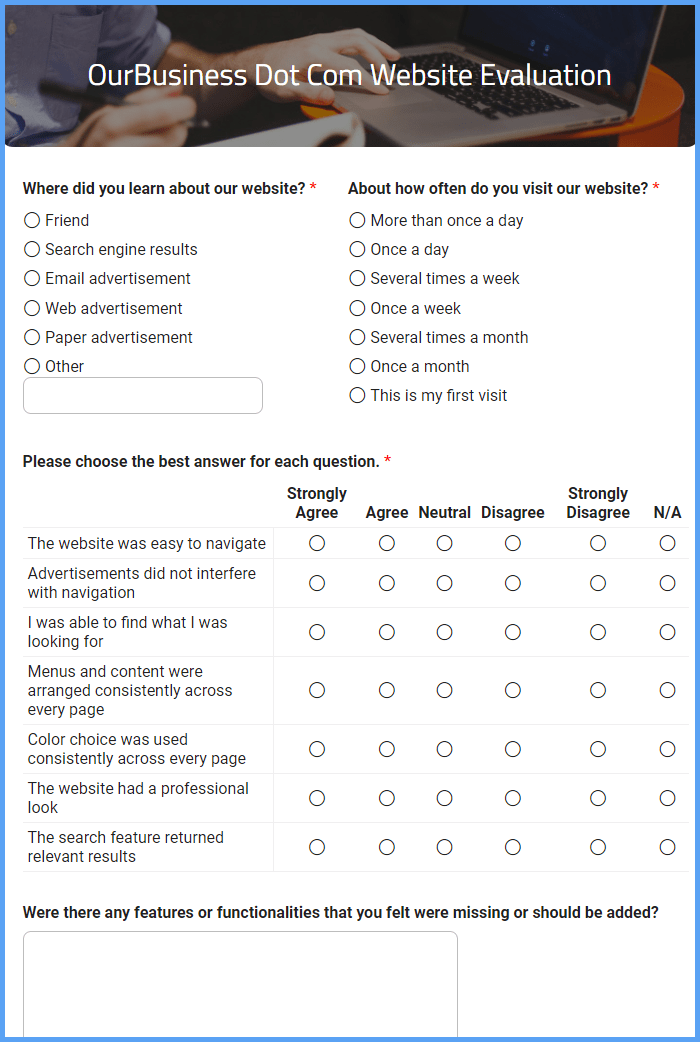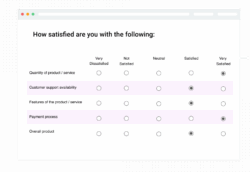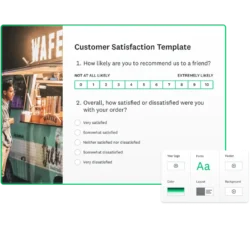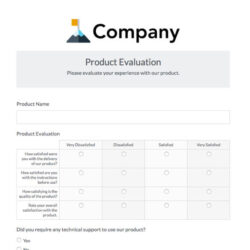Ever wondered if your website truly hits the mark with your visitors? It is a question many site owners grapple with, and for good reason. Your website is often the first impression a potential customer gets, a digital storefront that needs to be inviting, intuitive, and effective. But how do you really know if it is delivering the experience you intend? Guessing is not a strategy, and relying solely on analytics only tells you what people do, not why they do it or how they feel.

This is where direct feedback from your users becomes invaluable. Understanding their perspectives, pain points, and preferences can provide insights that no amount of backend data can. The good news is, gathering this crucial information does not have to be a daunting task. With a well-structured approach, leveraging a robust website user evaluation survey template can make the process straightforward and incredibly enlightening, guiding your efforts towards genuine improvements.
Why User Feedback is Your Website’s Secret Weapon
Let us face it: your website is built for your users. Their experience directly impacts your success, whether that is sales, lead generation, or content consumption. Without their input, you are essentially operating in the dark, making design and content decisions based on assumptions rather than concrete evidence. User feedback acts as a spotlight, illuminating areas of your site that are shining brightly and those that might be tripping users up.
Think of it this way: a user might visit your site, struggle to find a specific product, and then leave without purchasing. Analytics will show a high bounce rate or an abandoned cart, but only a direct question to that user would reveal the “why.” Perhaps your navigation is confusing, or the search bar is not prominent enough. These are the kinds of actionable insights that pure data often cannot provide on its own.
When you actively solicit feedback, you are not just gathering data; you are building a relationship with your audience. You are showing them that their opinion matters, fostering trust and loyalty. This proactive approach can lead to significantly improved user satisfaction, which in turn correlates directly with higher conversion rates, longer site visits, and increased repeat business. It is a win-win scenario that transforms potential frustrations into opportunities for growth.
Ultimately, incorporating user feedback into your website development cycle ensures that your site evolves with your audience’s needs, rather than lagging behind. It is about continuous improvement, making your website not just functional, but truly outstanding in the eyes of the people who matter most: your users. A comprehensive survey helps you pinpoint exactly what is working and what needs a little love and attention.
Key Areas a Survey Template Can Uncover
- Navigation and Usability: Is it easy for users to find what they are looking for? Are menu structures clear?
- Content Clarity and Relevance: Is your information easy to understand and does it meet user expectations?
- Visual Design and Aesthetics: Do users find your site appealing and trustworthy? Is the layout intuitive?
- Functionality and Performance: Are all features working as expected? Is the site loading quickly?
- Overall Satisfaction: How likely are users to recommend your site to others? What is their general sentiment?
Crafting Your Perfect website user evaluation survey template
Building an effective website user evaluation survey template does not have to be complicated, but it does require thoughtful planning. The goal is to gather the most relevant and actionable insights without overwhelming your participants. Start by clearly defining what you want to learn. Are you focused on a new feature, overall site experience, or specific content areas? Your objectives will guide the types of questions you ask.
A good template balances quantitative (measurable) and qualitative (descriptive) questions. Yes/No and multiple-choice questions are great for quick data points and trends, while open-ended questions provide rich, detailed feedback that can reveal nuances you might not have considered. For instance, asking users to rate their satisfaction with your checkout process (quantitative) followed by “What could make it better?” (qualitative) provides both a score and reasons behind it.
Keep your survey concise. Respect your users’ time by asking only what is necessary. A lengthy, complicated survey is likely to have a high abandonment rate. Use clear, unbiased language, avoiding jargon or leading questions. Test your survey internally before launching it to catch any confusing phrasing or technical glitches. Remember, the easier it is for someone to complete, the more likely you are to get valuable responses.
Finally, consider how you will distribute your survey. Pop-up surveys, email invitations, or links embedded within your site are common methods. The timing of your survey can also influence results. For example, a survey about a specific task might be best presented immediately after a user completes that task. A well-designed website user evaluation survey template is not just a collection of questions; it is a strategic tool for continuous improvement.
- Define your specific goals before drafting questions.
- Mix question types for a balanced perspective, combining ratings with open responses.
- Keep the survey length reasonable and the language clear.
- Ensure your questions are neutral and do not lead the user to a specific answer.
- Consider the best method and timing for distributing your survey to your target audience.
Gathering direct input from the people who actually use your site is undeniably one of the most powerful strategies for enhancing your digital presence. It moves you beyond assumptions, providing tangible data and personal perspectives that can shape more informed decisions about design, functionality, and content. This commitment to understanding your users not only leads to a better website but also strengthens the relationship you have with your audience.
By regularly evaluating user experience and acting on the insights gained, you are setting your website up for sustained success. It is an ongoing journey of refinement and adaptation, ensuring that your online platform remains relevant, effective, and truly user-centric in a constantly evolving digital landscape. Embrace the power of feedback to keep your website at its very best.



